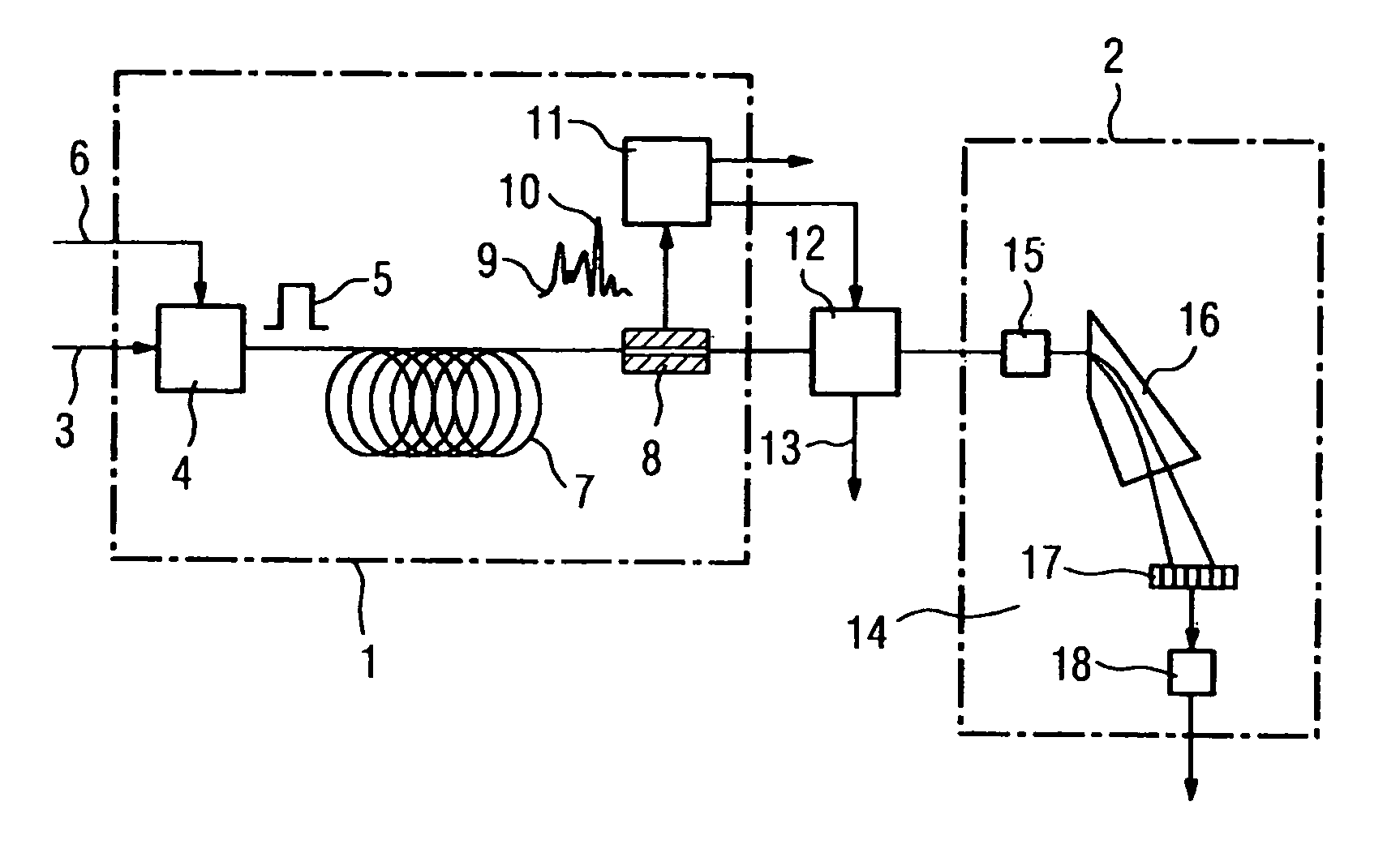Gas chromatograph with a mass spectrometer situated down therefrom, and method for performing the gas chromatographic/mass spectrometric analysis of a substance mixture
a gas chromatograph and mass spectrometer technology, which is applied in the direction of particle separator tube details, instruments, separation processes, etc., can solve the problems of undesired presence of carrier gas which comes out of the gas chromatograph together with the separated materials, and achieves the effect of minimal amount of carrier gas entering the mass spectrometer, cheaper and more powerful
- Summary
- Abstract
- Description
- Claims
- Application Information
AI Technical Summary
Benefits of technology
Problems solved by technology
Method used
Image
Examples
Embodiment Construction
[0014]FIG. 1 shows a gas chromatograph 1 with a downstream mass spectrometer 2 for analysis of a substance mixture (sample) 3, which is fed, after being taken out of a technical process and prepared, to a dosing device 4. The dosing device 4 is used to feed at a predetermined point in time a predetermined dosing amount of the sample 3 in the form of a short and precisely limited sample drop 5 into a carrier gas stream 6 and feed it to a separation device 7 in the form of a separation column or separation column circuit. The separation device 7 separates the materials contained in the sample drop 5 in accordance with their retention periods, so that the materials appear at the output of the separation device 7 in turn.
[0015]A detector 8 for detecting the separated materials is arranged at the output of the separation device 7. The detector 8 delivers a detector signal 9 which contains a peak 10 for each separated material, the surface of said peak being proportional to the amount of ...
PUM
| Property | Measurement | Unit |
|---|---|---|
| dimensions | aaaaa | aaaaa |
| heat conductivity | aaaaa | aaaaa |
| gas chromatograph | aaaaa | aaaaa |
Abstract
Description
Claims
Application Information
 Login to View More
Login to View More - R&D
- Intellectual Property
- Life Sciences
- Materials
- Tech Scout
- Unparalleled Data Quality
- Higher Quality Content
- 60% Fewer Hallucinations
Browse by: Latest US Patents, China's latest patents, Technical Efficacy Thesaurus, Application Domain, Technology Topic, Popular Technical Reports.
© 2025 PatSnap. All rights reserved.Legal|Privacy policy|Modern Slavery Act Transparency Statement|Sitemap|About US| Contact US: help@patsnap.com


